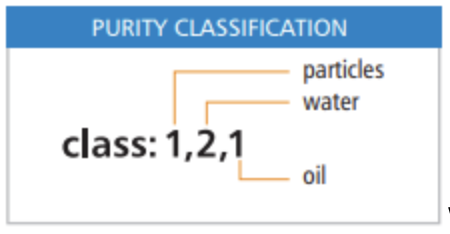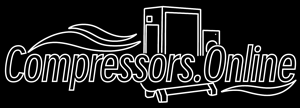- Home
- Our Categories
- Micro-VARI-Speed MT Series, Variable Speed, Rotary Screw Air Compressors
- ECO-Fixed-Speed T Series, Rotary Screw Air Compressor
- VARI-Speed PMT Series, Variable Speed, Rotary Screw Air Compressors
- VARI-Speed PMF Series, Variable Speed, Rotary Screw Air Compressors
- Refrigerated Dryers for Compressed Air, Water Removal
- NUAIR, Direct and Belt Drive Piston Compressors
- ABAC, Pro Piston Air Compressors
- PRO-TEK, Oil Free Compressors,
- ABAC, Fixed - Variable Speed, Rotary Screw Air Compressors,
- ABAC, Nano, Refrigerated Dryers for Compressed Air, Water Removal
- Prevost, Pipework Systems, 100% Aluminium & D.I.Y Kits
- Quality Used Air Compressors
- Bambi Air Compressors, Ultra Quiet + Oil Free
- Vertical Air Receivers, Steel and Galvanised
- Oil-Water Environmental Condensate Treatment, Compressed Air
- Adsorption Dryers, -40, -70 Degrees, Compressed Air
- Filtration and Drainage Solutions, Compressed Air
- Air Compressor Spares & Service Kits, Service videos, Compressor oil
- Quick Release Air Couplings, Manufactured by PCL and Prevost
- Rubber, PVC Hose, Nylon Tubing, Coiled Hoses, Clips
- Air Blow Guns, PCL, Prevost, Compressed Air
- Retractable Hose Reels
- Hose Tails, Straight & Tee Joiners
- Metric, Pneumatic, Push-In Fittings
- BSP Threaded Fittings, Elbows, Reducing Bush, Tee, Manifolds, Nipples
- Lever Ball Valves & Shut-Off Valves
- Air Tools
- Nitrogen Generators
- Spray Painting Essentials
- Air Tyre Inflators
- Air Compressor Hire
- Blog
- About us
- Shipping
- Comparison List
- Contact us
- Blog
- My Cart
Air Quality Guide, What is ISO 8573-1
Availability: In Stock
Air Quality Guide, What is ISO 8573-1
What is ISO 8573-1 and How Does it Impacts Your Compressed Air System?
Understanding International Compressed Air Standard ISO 8573-1
Posted on November 26th, 2021
ISO 8573 is an international standard in the United Kingdom, Germany, India and the United States that defines contaminants found within compressed air.
It is known as the guideline to understand air purity levels within a compressed air system.
The standard is divided into nine different parts. 8573-1 defines air quality classes based upon specific contaminant types to allow users to determine the appropriate purity levels for any given application. 8573-2 through 9 outline methods to test and quantify an air sample to determine which purity class it falls into. ISO 8573-1 is the most frequently used aspect of ISO 8573, and we will explain it in more depth throughout this blog.
What is ISO 8573-1?
The ISO 8573 group of International Standards is used to classify compressed air quality by describing its contaminants.
It also provides test methods and analytical techniques for each type of contaminant.
A compressed air purity classification is achieved by installing specific compressed air treatment equipment.
Depending on the use of a compressed air system, the air quality may have to be validated in accordance with the necessary quality class as defined by ISO 8573-1.
The table below demonstrates the purity classes used by ISO 8573-1 to classify compressed air quality. The purity classes define the maximum amount of contaminants that may exist in the air stream.
Your Compressed Air Quality and Purity Class
It is essential to ensure your compressed air meets the standards required for your application to avoid damage to equipment and product spoilage.
Systems that do not meet the required class are risking the quality of the product, the health of staff and customers and even the business’s reputation.
Although it is not a legal requirement to meet ISO standards, it ensures you are installing the right compressed air treatment equipment to produce high-quality end products.
If the quality of your compressed air does not meet the necessary standards set by ISO 8573-1, there is a chance that damage will occur to your equipment and end product.
For example, within the food industry, not removing the appropriate level of contaminants can cause food to become spoiled, or bacteria can begin to grow, which can cause consumers health problems.
Understanding the ISO 8573-1 Classification Table
ISO 8573-1 is split into three categories: solid particulates, water (liquid and vapour) and oil (aerosols and vapour).
Therefore, when looking for compressed air treatment equipment that is ISO 8573-1 certified, it is essential to understand the classifications.
This image shows an example that indicates the filter is Class 1 for particles, Class 2 for water and Class 1 for oil.
Within each of these three categories, there are different classifications for each contaminant.
The lower the number in each category, the higher the Purity and the Dryer the air needs to be.


be.
For example, within the particles category (see table above), class 5 air can have a maximum of 100,000 particles per cubic metre whereas, class 4 air can only have a maximum of 10,000 particles per cubic metre. Therefore, class 5 air can contain more particles than class 4.
Choosing ISO 8573-1 Certified Products
At Airwave Compressors, we are well-versed in ISO 8573-1 requirements. Our compressed air products are certified, and our sales team can help you choose the best filtration for your system requirements.
More Information
| SKU | Air Quality Guide |
|---|---|
| Brand | Information |




